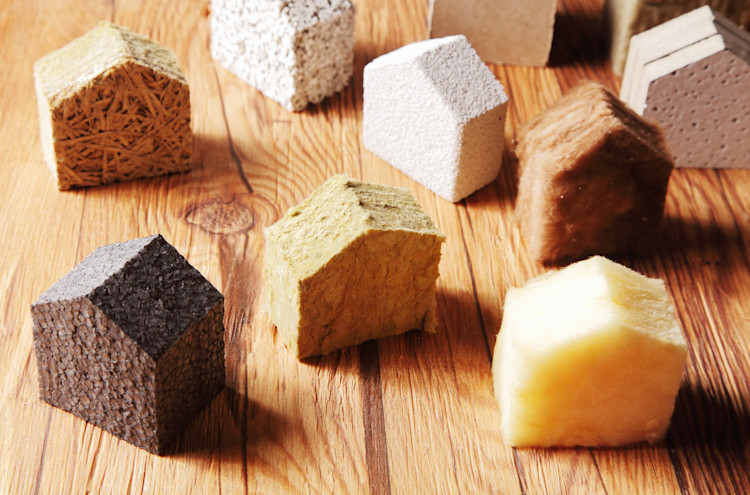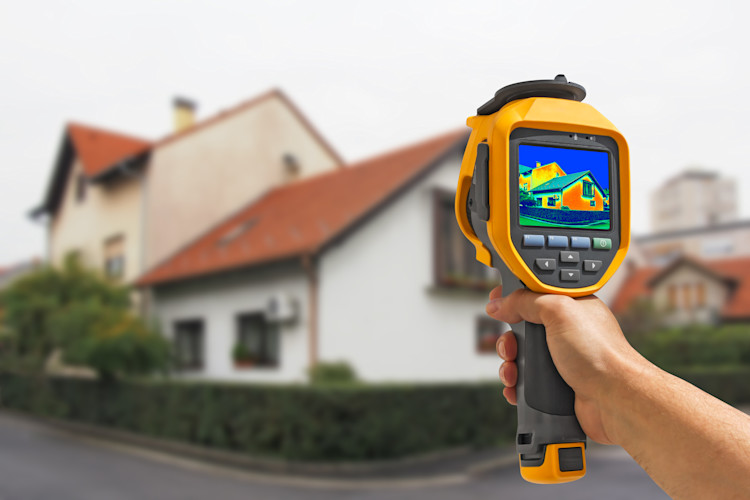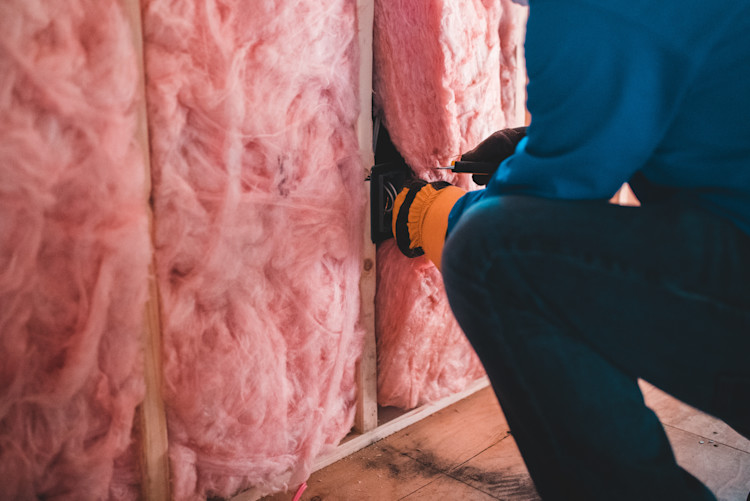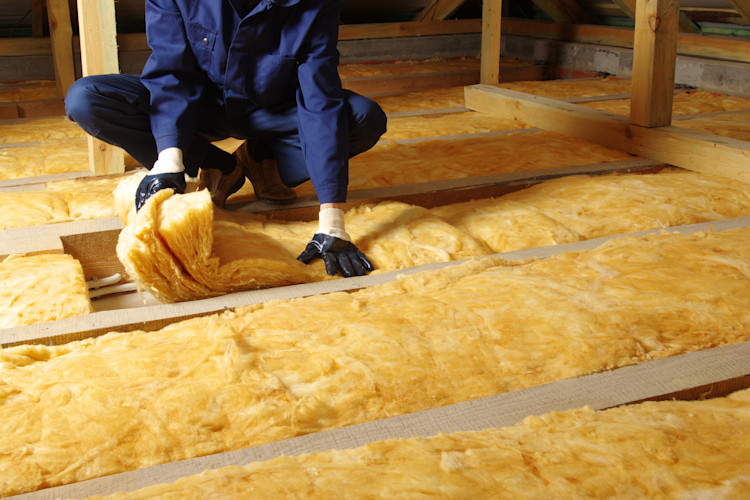Find a Home Insulation Specialist near you
The average rating for Bark Home Insulation Specialists is 4.48, based on 20,686 reviews
Sick of paying the earth in energy bills? If you’re considering getting home insulation but worried about costs, read on to find out how much you’ll pay depending on your requirements.
The average price of home insulation is $3,850 in the United States. This figure can vary significantly based on the size of your project, the type of insulation, the materials used, your location, the installer and more.
Home insulation might not be the ‘sexiest’ topic in the world – but it’s essential to think about when you own a home. The US Department of Energy found that insulation lowers your heating and cooling costs, and improves comfort. This is especially important in areas of the country where it gets very cold in the winter.
You can insulate your house in several different ways. Focusing on the flooring is one strategy, while insulating your walls is another. You might even draught proof the gaps around windows and doorways.
Whatever your strategy, you’re in the perfect place to find out all the details involved with home insulation costs. Just remember that these figures are based on our data and research, and the best way to get a personalized quote is to get in touch with a home insulation expert near you.

You have several different types of home insulation to choose from, and the right expert can guide you on all of these. The most common methods include:
Cavity wall
Draught proofing
Floor
Attic
Solid wall
The list below is not exhaustive, and we’ve provided the average prices for each one. Remember, home insulation is an investment for the long-term. You’ll reap the rewards of lower energy bills for years to come.
The average cost of cavity wall insulation is $2,500. You’ll still find prices both lower and higher than this though. It’s usually charged per square foot, from around $1 to $4 per square foot.
Cavity wall insulation reduces heat loss by filling the airspace between the layer of bricks with an insulating material. It’s a relatively quick and simple process.
Your installer will usually need to drill holes at various points in your brickwork, before filling it with a material. Common materials include polystyrene beads, mineral wool, or polyurethane foam.
The average cost of draught proofing insulation is around $200. You’ll usually be charged for each part of your house (window, door, etc.) that you apply this to, so the price can vary considerably.
Draught proofing removes gaps where heat is escaping from your home. It’s one of the most cost-effective home insulation technique as it doesn’t need much expertise or materials. You can probably do it yourself.
Draught proofing is usually applied to the outskirts of windows, underneath doors, the gaps in keyholes, and chimneys as well.
The average price of floor insulation in your home is $2,000. These prices can change quite a bit, depending on the company you use.
Floor insulation involves inserting a layer of heat-trapping material beneath your floorboards. This prevents heat escaping through your floorboards, and around pipes.
You may need new flooring during this process, as your carpet could need to be removed to access the floorboards. This will be at an additional cost.
Insulating your attic in the USA is priced at around $1,500 for a typical home. Prices per square foot range from $1.50 on the low end, up to $5 per square foot on the expensive side.
This is an important insulation method, because approximately 25% of your property’s heat is lost through the roof. The good news is that attic insulation can be an affordable solution to the problem.
Attic insulation involves adding a thick material in your roof space, usually along the rafters or joists. This acts as a barrier to prevent heat from rising and escaping through the roof. Installation is fairly straightforward.
A typical solid wall insulation costs $3,000 for a homeowner in the USA. This is around $0.50 to $1.25 per square foot for installation.
If you live in an older property that won’t benefit from cavity wall insulation, solid wall insulation is an effective alternative. This involves adding insulation boards to the external walls of your home. Your installer will then add a base coat and a mesh over the top of the boards to ensure that they are resistant to impact.
The benefit of solid wall insulation is that it improves the look of your property as well as minimizing your energy bills. Solid wall insulation is generally more expensive than other types of insulation. It also works wonders for minimizing damp or mold issues caused by faulty (or lack of) rendering.
| Type of insulation | Average cost |
| Cavity wall | $2,500 |
| Draught proofing | $200 |
| Floor | $2,000 |
| Attic | $1,500 |
| Solid wall | $3,000 |

Insulating your home is priced according to several factors. You’ll need to keep all of these in mind when discussing numbers with professionals. The main examples include:
Type of insulation
Materials
How much you need (square footage, and house condition)
Location
Installer
You should discuss all this with the installer you bring in to quote on the project. Gather several opinions before jumping into a decision.
You have five main types of insulation, which we’ve summarized further above in the blog. These aren’t your only options though. You’ll see many experts offering pipe insulation, for example.
Each one has its own strategy for keeping your house warm, time frames for completion, typical surface areas, materials that might be suitable, and so on.
The list of potential materials for home insulation is seemingly never-ending. Every professional has their own recommendations for what works best, depending on your budget, and the situation.
Glass wool, polyester, cellulose fiber, recycled paper, and natural wool are all used on many projects. PIR, phenolic foam, polystyrene, and wood fiber are other examples. Other types of wool are also popular, such as glass wool, rock wool, mineral wool, and sheep's wool.
Insulating some parts of your house involves more square footage than others. Focusing on a single window doesn’t involve too much material – whereas doing the entire flooring area, or a solid wall, will be a large project.
The amount you need is connected to whether insulation is already in-place in certain parts. You’ll also be affected by how your home was first constructed. Some older methods of building properties are more successful at retaining heat than others.
If you need more guidance on your home’s ability to retain heat, speak to a building expert near you in the USA.
Some parts of the United States are significantly colder than others. This translates into a higher project cost, because more materials are needed. However, it can also make the project more worthwhile, as the growth in your house value is proportionally greater.
Statistically the coldest parts of the country in winter include Alaska, North Dakota, and Minnesota. Home insulation projects are often more expensive and time-consuming here.
Meanwhile, in the warmer parts of the USA – such as Florida, Texas, and California – you’re likely to come across lower scale projects. Prices might still be relatively high though due to the high cost of living in these places.
These are just guidelines though and you should gather personalized quotation to understand the true lay of the land.
Every installer charges for home insulation in a different way. It’s best that you get several independent quotations before making a choice. Some will ask for payment by square footage, while others will do it based on the time involved.
Ask for guidance on how they’ve reached their figure, and then analyze how their price compares to the quality you’ll receive. It’s useless to pick the cheapest option if it creates a terrible result!

Many of the materials used to insulate properties are easily accessible to the average person. So, does this mean that you can insulate your home by yourself? The simple answer is yes, but the job is unlikely to be anywhere near as effective as a professional.
Draught proofing requires very little investment and can be done by almost anyone. Floor insulation is within your reach too, if you’re willing to lift up the floorboards and then manually put in the insulation. If you have any friends or family members with experience in DIY projects, ask them to help out.
Most other types of insulation need a trained professional. And it’s possible that costly mistakes will be made with the above two strategies, too. It can sometimes cost more in the long term. So, make sure you have the necessary expertise, experience, and equipment.
On average, well-implemented insulation can improve your property value by around 4%. It’ll be less for small jobs, and higher for huge projects on a very poorly constructed house.
Improving your home insulation can reduce your energy bills by up to 30%. This is valued highly by many home buyers. It’s also appreciated by the most eco-conscious buyers.
The approximate 4% increase in property value translates into the following:
$200,000 – increases value by around $8,000
$400,000 – increases value by around $16,000
$750,000 – increases value by around $30,000
$1 million – increases value by around $40,000
$1.5 million – increases value by around $60,000
Home insulation is a great solution if your home is older, generally draughty, or has high energy bills. Many homeowners say that it’s worth the investment long-term. You should speak to an expert for personalized guidance on how it’ll affect your property’s value.
Take a look at the advantages and disadvantages of home insulation in the section below.

You can unlock several advantages when you improve your home insulation.
Firstly, your energy bills will likely go down because you don’t need to use as much heating in the colder months. This can be anywhere from 10% to 30% in reduced prices when major jobs are done well.
Your home will become more eco-friendly by extension. Less heating will be used, and more natural heat will be retained in the property. This lessens your harmful effect on the environment.
Another financial advantage is that your house value is likely to go up. And logistically, insulation projects don’t tend to take very long. You’ll often get them completed in a matter of days or weeks.
There are also disadvantages to home insulation projects, though. You’ll have to pay a sizeable amount (upwards of $1,500) in most cases. This is not money that you’ll make an immediate return on your investment through. You’ll thus need to save up for the project and have faith in the long-term viability of what you’re doing.
When insulation projects are completed poorly, it can create fire risks. This is especially common with cheap materials that aren’t fit for purpose.
By insulating an older house, it’s possible that moisture will be trapped inside of walls if you don’t ventilate it properly. This tends to result in damp and mold issues.
And lastly, insulation projects can be disruptive and messy for anyone living in the home. There’ll be a couple of weeks of unrest in your daily lives in many instances.
| Advantages of home insulation | Disadvantages of home insulation |
| Heating bills go down | Up-front costs |
| Eco-friendly | Can sometimes be a fire risk |
| House value increases | Trapped moisture |
| Installation doesn’t take long | Installation might be disruptive |
Home insulation prevents heat from escaping from your home by using a variety of methods. The most common technique is adding a physical barrier between your walls and the outside elements. Home insulation is a popular method of home improvement as it significantly reduces your energy bills while making your property more energy efficient.
In most cases, yes. It can decrease your energy bills and improve your property value. It’ll also make living in your house far more comfortable and enjoyable. The main exception is if you live in an area that rarely gets cold.
You should look carefully at evidence of previous work. Ask for examples, and if you can speak to the homeowners directly. The ideal professional should have a catalog of success stories and won’t be hesitant to talk about it.
The person should be registered with the relevant industry boards and authorities. They should have plenty of independent online reviews, saying what an excellent job they do. And total transparency about prices, without any hidden costs, is a must.
Take your time when researching insulators in your area. Use an online search website to find the best professionals possible. And ask your friends and family for a second opinion if you feel unsure.
You can save up to 30% on your energy costs by insulating your home properly. The average figure tends to be around 20%. Over many years (or decades) this can create a return on investment. This is also because potential buyers for your home will value it more highly.
The average rating for Bark Home Insulation Specialists is 4.48, based on 20,686 reviews